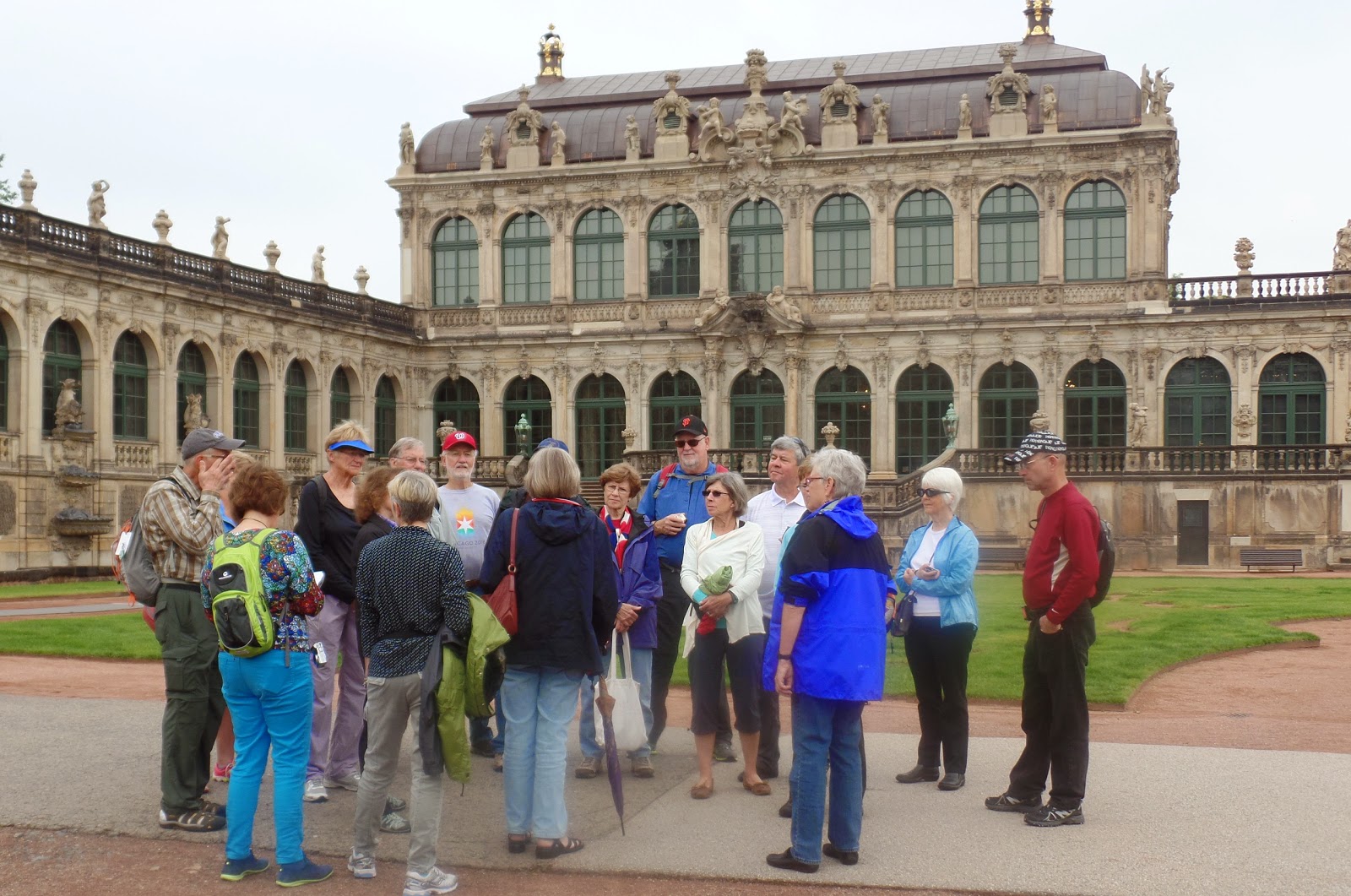(And a Greatly Needed Chance to Wash Some Biking Clothes)
Day 7, A Full, Fascinating Day and Another Night in Dresden
 |
| The Road Scholar adventurers began the morning with an expert-led lecture in the Zwinger Palace courtyard. |
Amazing what a hot shower, a delicious dinner, a good night's sleep, a yummy breakfast and, most of all, dry clothes will do. We awoke for a full day off the bikes to gray but dry skies (and least until the afternoon) in incomparable Dresden, known as "Florence on the Elbe." Dresden is capital of the state
 |
| Sue, Kate & Leah hear the Dresden story. |
At the heart of the Dresden story is a bitter debate over justification of the bombing. A city of
 |
| The view of Dresden, "Florence on the Elbe," from atop the Frauenkirche. |
 |
| Destroyed in 1945, the Semper Opera House reopened 40 years later. |
With a sense of Dresden's history by late morning, we had the afternoon free to explore on our own. We all were excited, because this city teems with energy. Kay decided I need a good application of sun block before we hopped on a bus,
 |
| Kay is cheeky about SPF50. |
 |
| A window into Jay Schneider? |
An equally perfect vantage point to take in the panorama was our next stop, Brühl's
 |
| Off the bike for a day, I climbed to the "Balcony of Europe." |
As I mentioned in an earlier blog posting, we had been in Mother Nature's good graces for much of our
.jpg) |
| The foreboding gray skies finally let loose in early afternoon. |
The World War II air raids left this magnificent building in a 42-foot-high pile of rubble
 |
| Rubble for 40 years, the Frauenkirche finally was rebuilt by 2005. |
Kay and I finally reached the church and scampered up the steps with others visiting the city, shaking off our umbrellas before filing into the church and finding seats in a pew. The interior is magnificent. In June
 |
| Finding a pew in the Frauenkirche is well worth the time. |
Elliot's Day's Biking Total: 0 miles.
No comments:
Post a Comment